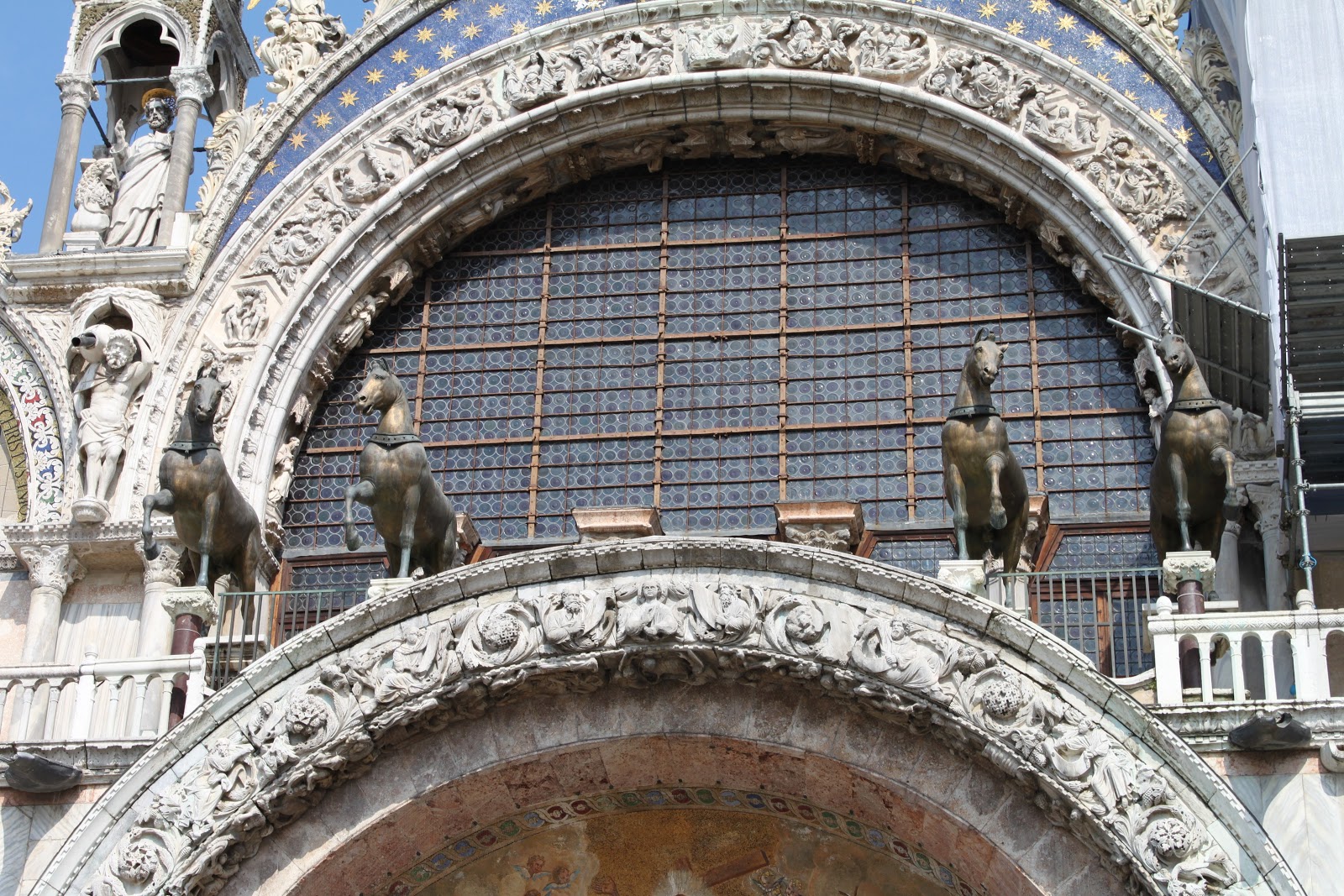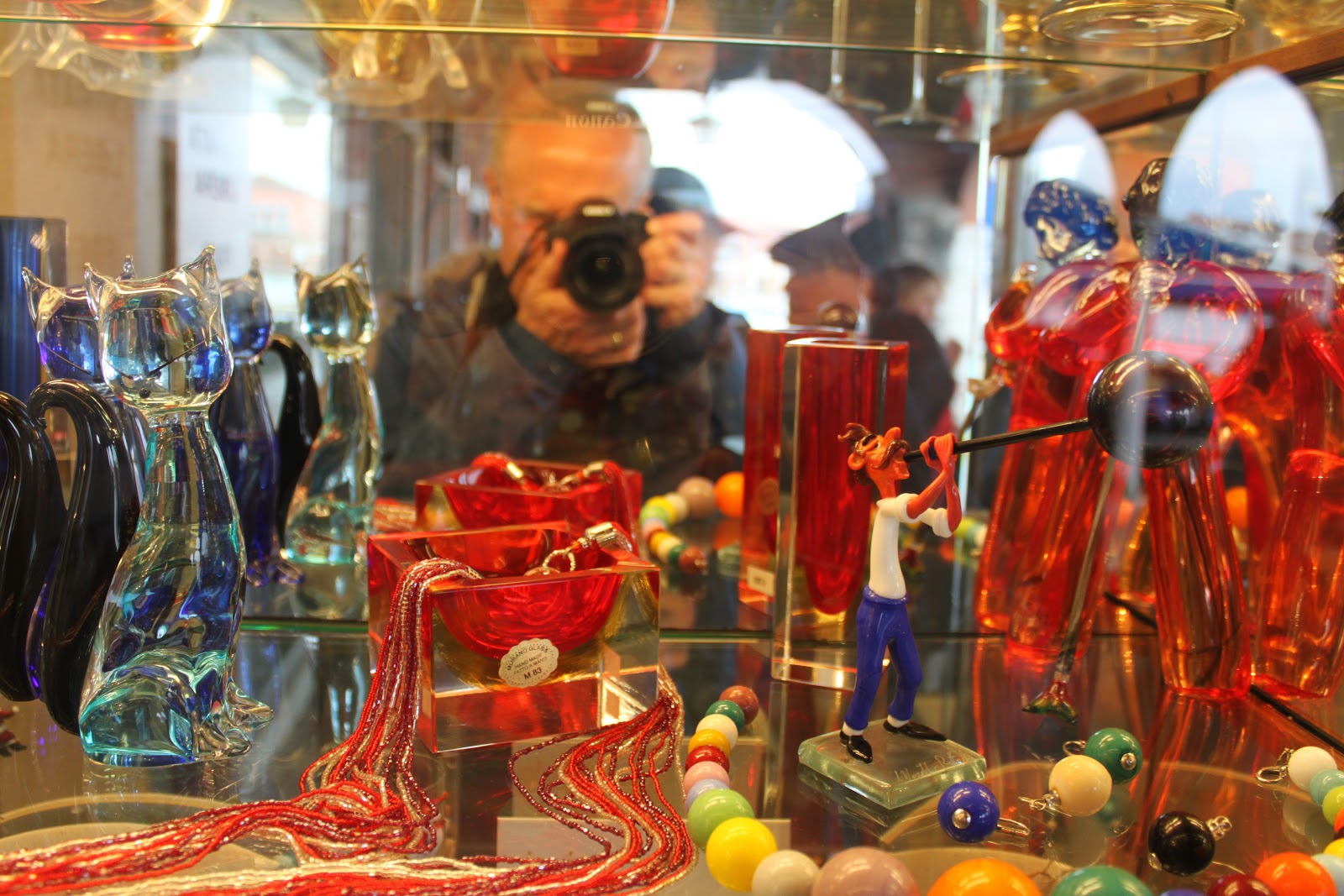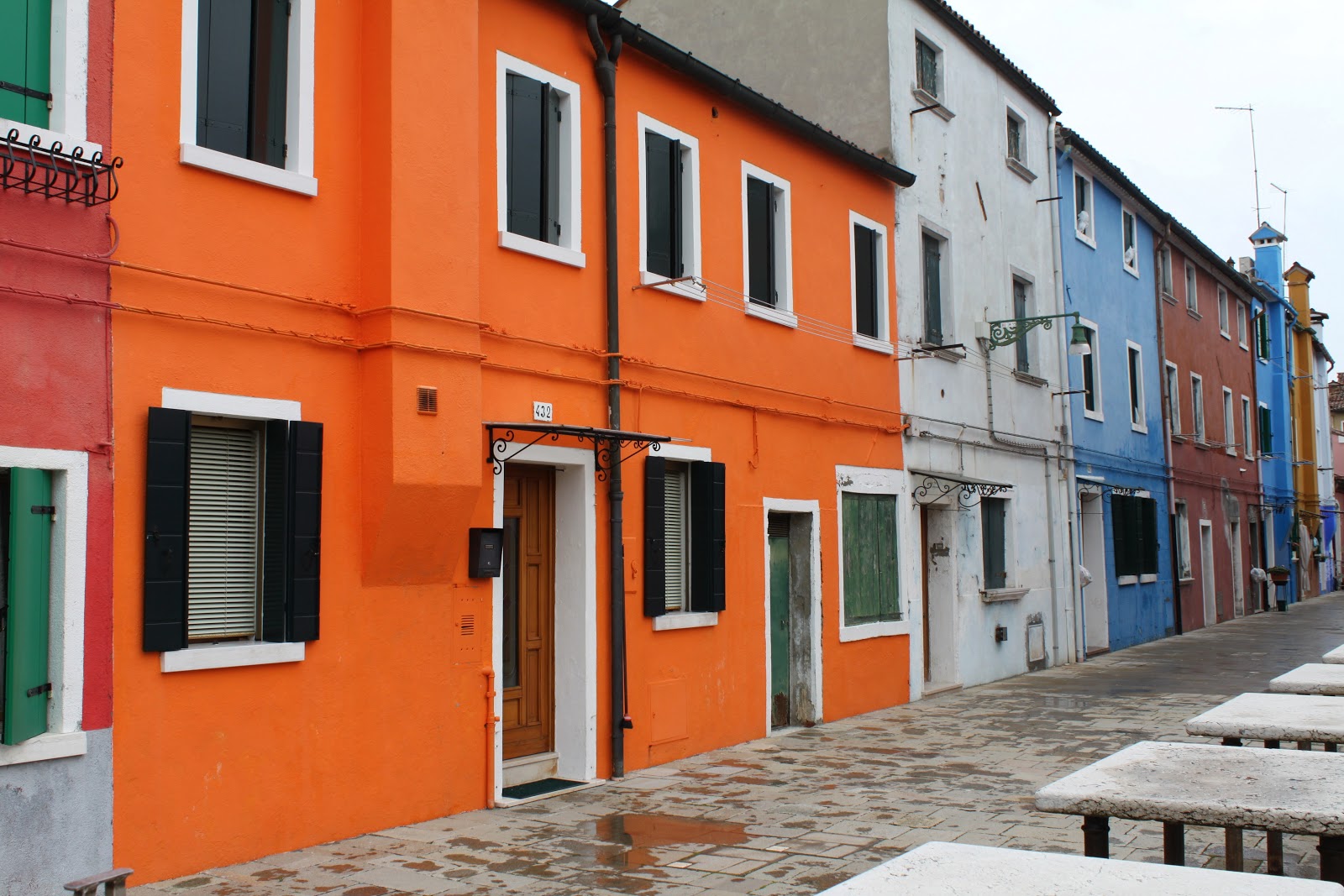 |
| Every place we visited in Italy had its own unique charms, but we found Venice the most entrancing of them all. This is our hotel on the Grand Canal. |
 |
| Gondola parking area |
 |
| Piazza San Marco: this is the center of activity for visitors and we came back several times. |
 |
| Basilica di San Marco |
 |
| Torre dell'Orologio, from the 15th Century |
 |
| 24-hour zodiac clock on the tower that also tells the phases of the Moon. |
 |
| The Horses of St. Mark |
 |
| St. Mark and Angels |
 |
| One of the mosiacs on the facade depicts the body of St. Mark being smuggled out of Alexandra in a basket of pork, something the Muslim guards would not touch. |
 |
| Palazzo Ducale |
 |
| The Bridge of Sighs |
 |
| Rialto Bridge |
 |
| Bev and Stu Gant from CA, one of our traveling companions |
 |
| On the island of Murano, famous for glass-making |
 |
| A master glassblower begins a piece |
 |
| And the result is complete in an amazingly short amount of time |
 |
| Some of their beautiful work |
 |
| Next we visited the island of Burano, known for fishing and fine lace. We had lunch at this little place. |
 |
| Burano stands out because of its residents' fondness for brightly colored houses. |
 |
| It was like a miniature version of Venice. |
 |
| It even has its own leaning tower on the church of San Martino. |
 |
| Back on the main island: the church of San Simeone Piccolo is modeled on the Roman Pantheon. |
 |
| Santa Maria di Nazareth, or Church of the Scalzi. |
 |
| Second from the right is Stefania, our guide, a native Venetian who still lives there. |
 |
| Rialto Mercato, an open-air market known especially for seafood. |
 |
| Harry's Bar, a haunt of celebrities for decades, including Hemingway. |
 |
| The "Columns of Justice," dedicated to St. Theodore and St. Mark. |
 |
| Relief of the drunkenness of Noah on the Doge's Palace. |
 |
| Adam and Eve. |
 |
| Back to the Bridge of Sighs. |
 |
| San Giorgio Maggiore Island and church by Palladio. |
 |
| We took the vaporetto over to San Giorgio. |
 |
| View of San Marco back across the lagoon. |
 |
| Views from campanile of San Giorgio of the city and lagoon. Stefania recommended this tower over that of San Marco, but she may have been biased because she was married in San Giorgio. |
 |
| The island on the left is La Giudecca, a place less frequently visited by tourists. |
 |
| Back to the main island along the Grand Canal again. |
 |
| The house on the left with the brown awning on the second floor is where Henry James wrote "The Aspern Papers." |
 |
| Gondola yard |
 |
| Santa Maria della Salute at the entrance of the Grand Canal, a massive Baroque edifice supported by over a million wooden pilings. |
 |
| Titian's "Day of Pentecost" in Santa Maria. |
 |
| Our last trip up the Grand Canal back to the Continental is coming to an end, and the next morning we caught an early flight to Amsterdam. |









































No comments:
Post a Comment